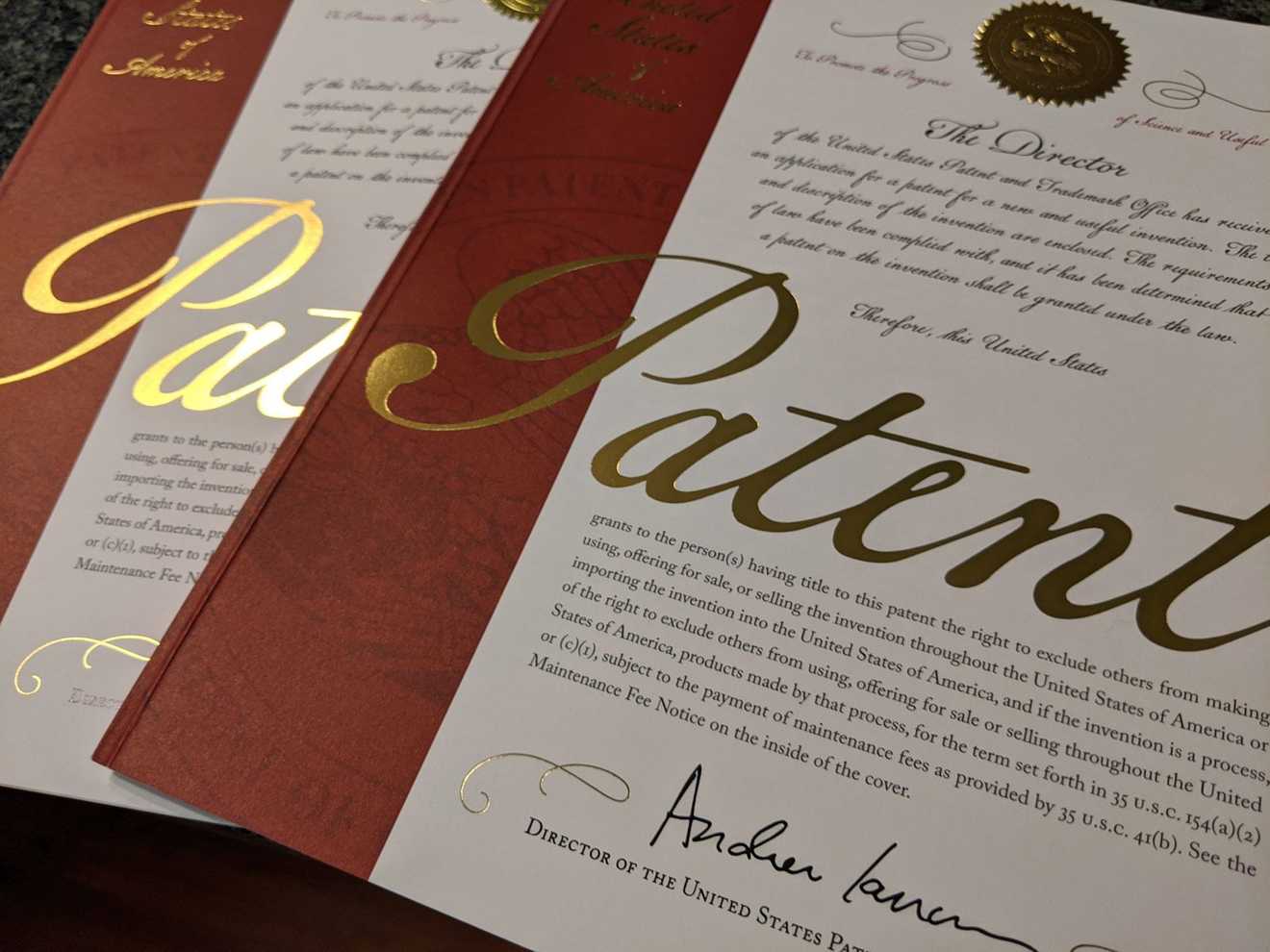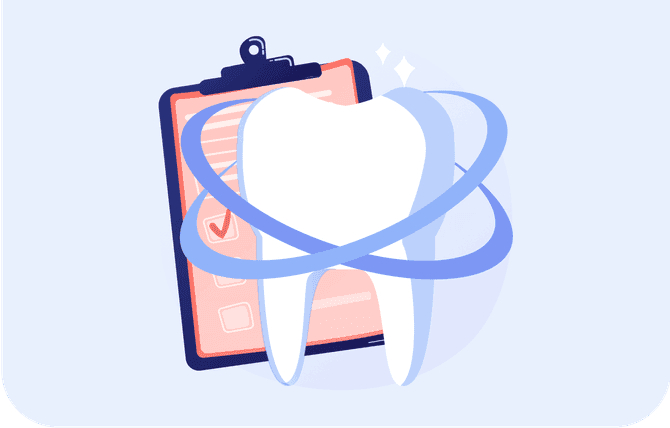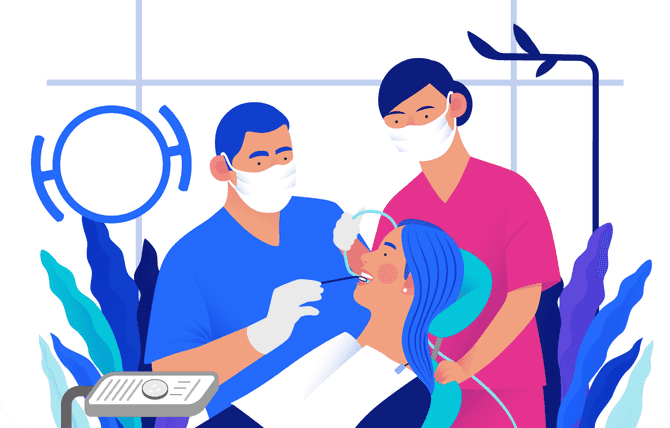
Competition in the aligners market: let’s talk about patents
by Khamzat Asabaev in Oct 05 2022
Digital treatment planning allows orthodontists to seamlessly simulate and craft a variety of orthodontic treatments with innovative technology that reduces the need for physical models. These digital solutions generate 3D renderings of the teeth with which teeth' movements can be meticulously planned sometimes with the assistance of artificial intelligence. VISION by SoftSmile is a digital treatment planning tool that increases the precision and speed of the entire process and improves treatment outcomes.
In the past two years, SoftSmile has built an awe-inspiring portfolio of patents focused explicitly on digital treatment planning. We have already been granted over 40 U.S. patents, with over 30 additional patents pending. We will file dozens of new patents in 2022, solidifying our leadership in treatment planning research. Many of our patented innovations – for instance, using point cloud technology or stress calculation during staging – represent new revolutionary approaches that will be useful in orthodontics as well as other broader applications. In comparison to other dental players, only AlignTechnology holds more patents relating to treatment planning than SoftSmile. All other competitors, whether a multi-billion-dollar public company or a startup focused purely on digital treatment planning, are well behind.
It is not typical for young startups like SoftSmile to invest enormous resources in building IP assets from day one. Some believe that patents are not worth the investment and can be easily played around with, but for SoftSmile, the decision to go all-in on IP was clear for two main reasons.
First, we are building a unique product from scratch. The solutions and algorithms we are using are groundbreaking and allow Vision to be 50 times more efficient than any other treatment planner available to doctors. Thousands of hours of research and practice led to the innovations we implemented while developing Vision – and we want those innovations to be protected.
But the main rationale to protect each step and feature of Vision with patents is that you do not want to come empty-handed to a gunfight. And the aligners industry landscape has been a gunfight for over two decades. To be more precise, there is one big gun aimed at any newcomers. This dynamic of the market is one of the reasons why patients don’t have much choice when it comes to aligners treatment.
While many believe clear aligners are becoming a commodity as the number of aligner companies is skyrocketing, this is a superficial understanding of the market. There is just one player who has the capability to provide high-quality treatment for complex cases with aligners at an industrial scale. Looking even deeper, we realize that all these newcomers use a pretty limited number of rather simple software solutions. Those solutions are not robust enough and cannot fully assist doctors with planning treatment for crowded cases. Doctors end up turning to the established and trusted solution: Invisalign.
AlignTechnology has its own proprietary software (ClinCheck) for preparing aligners treatment plans. It is the most advanced solution for digital orthodontics, tested by millions of successful cases. It is the industry standard for the qualities and features doctors expect from any other aligners producers. The secret weapon of a genuinely successful business is a sophisticated digital treatment planner, and this software is well protected by hundreds of patents.
While the technology is complex, it can be reproduced. After all, there are companies with unlimited resources who have dreamt and worked tirelessly toward getting a share of the lucrative aligners business. Yet, we do not see them competing with AlignTech. I believe that the main block for most global dental players to break into this sector is an enormous wall of patents, as well as AlignTech's relentless willingness to sue anyone who brings to the market anything similar to Invisalign. In past years they sued OrthoClear, ClearCorrect, SmileDirectClub, and 3Shape, and deterred many other prominent dental players from even considering entering the market. Funnily enough, other players are also suing each other over IP infringement – it is the true Wild West of aligners. This crossfire is damaging, expanding – in 2021 alone, AlignTech filed for dozens of new patents – and is not going to dissipate.
There is this myth that once AlignTech’s patents started expiring, the road for competitors to enter the aligner space opened. This is quite far from reality. Even when some patents expire, the most valuable functions of the software remain protected. For example, let’s look closer at the digital treatment planning process. In order to prepare a setup (sequence of steps required for achieving a wished result), you need to follow dozens of consecutive stages, starting from import, then segmentation, jaws alignment, and so on. In addition, a doctor may need some auxiliary services for peculiar cases and a modern treatment planner needs to offer them.
Now imagine that each step or function of the software, over 50 at least, is protected by patents. By the time a particular patent expires, the functions and features have been upgraded, and new patents emerge. Today, AlignTech has hundreds of active patents protecting its software.
The only way to compete on a meaningful level is to create an efficient and multifunctional treatment planner that is (i) better than ClinCheck and (ii) unique. Those who can solve this problem can create direct competition to AlignTech and more importantly, empower many other players to level the playing field.
When SoftSmile started building Vision, we were almost blessed by our ignorance as no one in our team ever worked at AlignTech or had even used ClinCheck. We knew the issues doctors had and how to fix them, but we were not limited by frameworks or approaches created by someone else. Most of our practices were based on our team’s profound understanding of math and physics in addition to the data from thousands of cases one of our co-founders has treated. Now we are able to learn from our clients and partners, some of whom are the pioneers of the aligners industry, and take the best from other practices but the core of Vision was built just on a simple idea: "let's build what doctors want".
And yet, our lack of knowledge of how the “established players work” helped us build Vision on wholly unique and innovative premises. We ensured each solution and every step of our software was protected through patents. Without patents, you may find yourself staring down the barrel of a gun in the rough landscape of the aligner industry with no way to defend your company or product.
Digital dentistry employs cutting-edge software to aid in digital treatment planning and utilizes dental design and treatment software to ensure optimal outcomes. Contact us to request a demo or for any questions.



